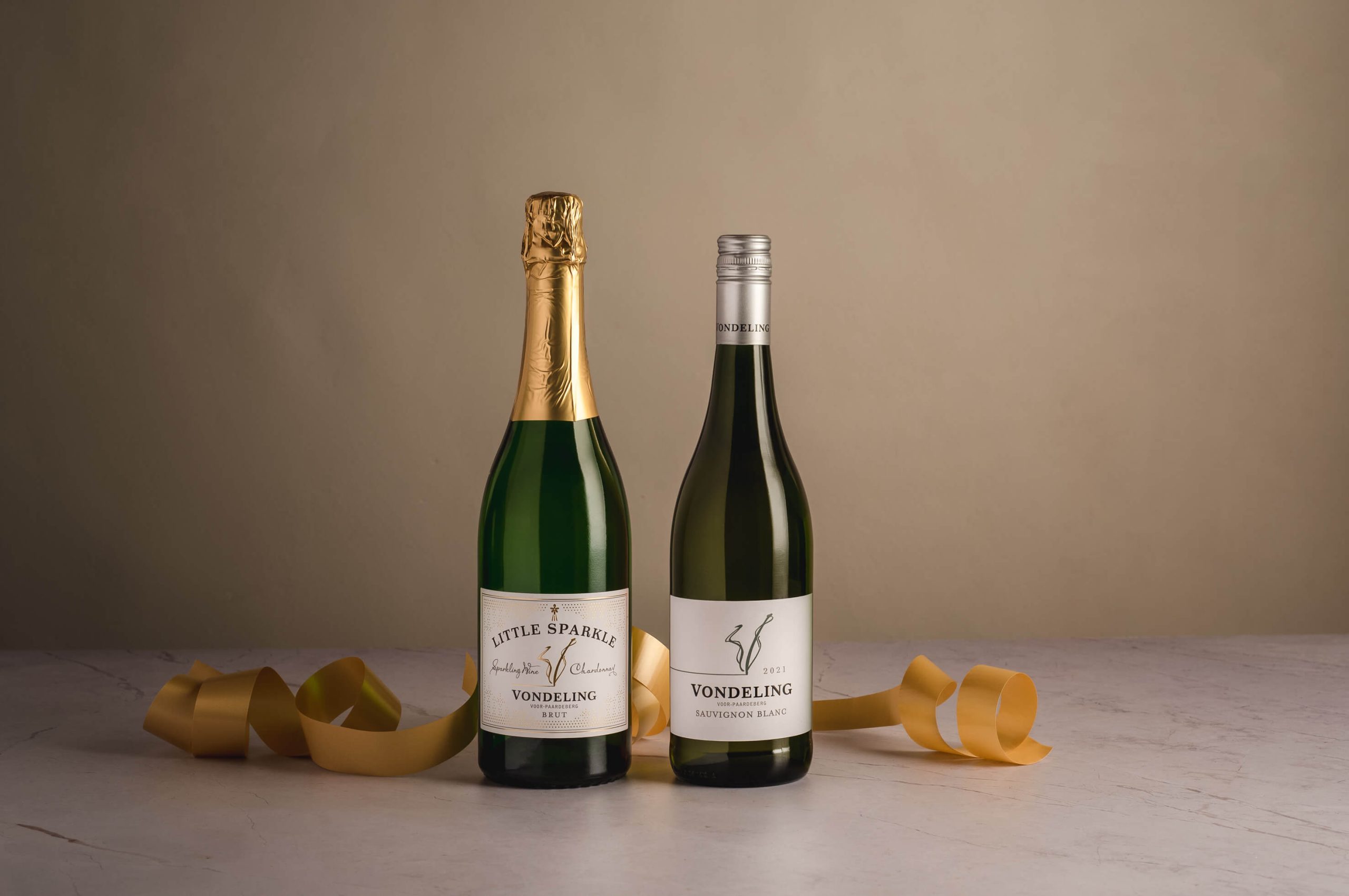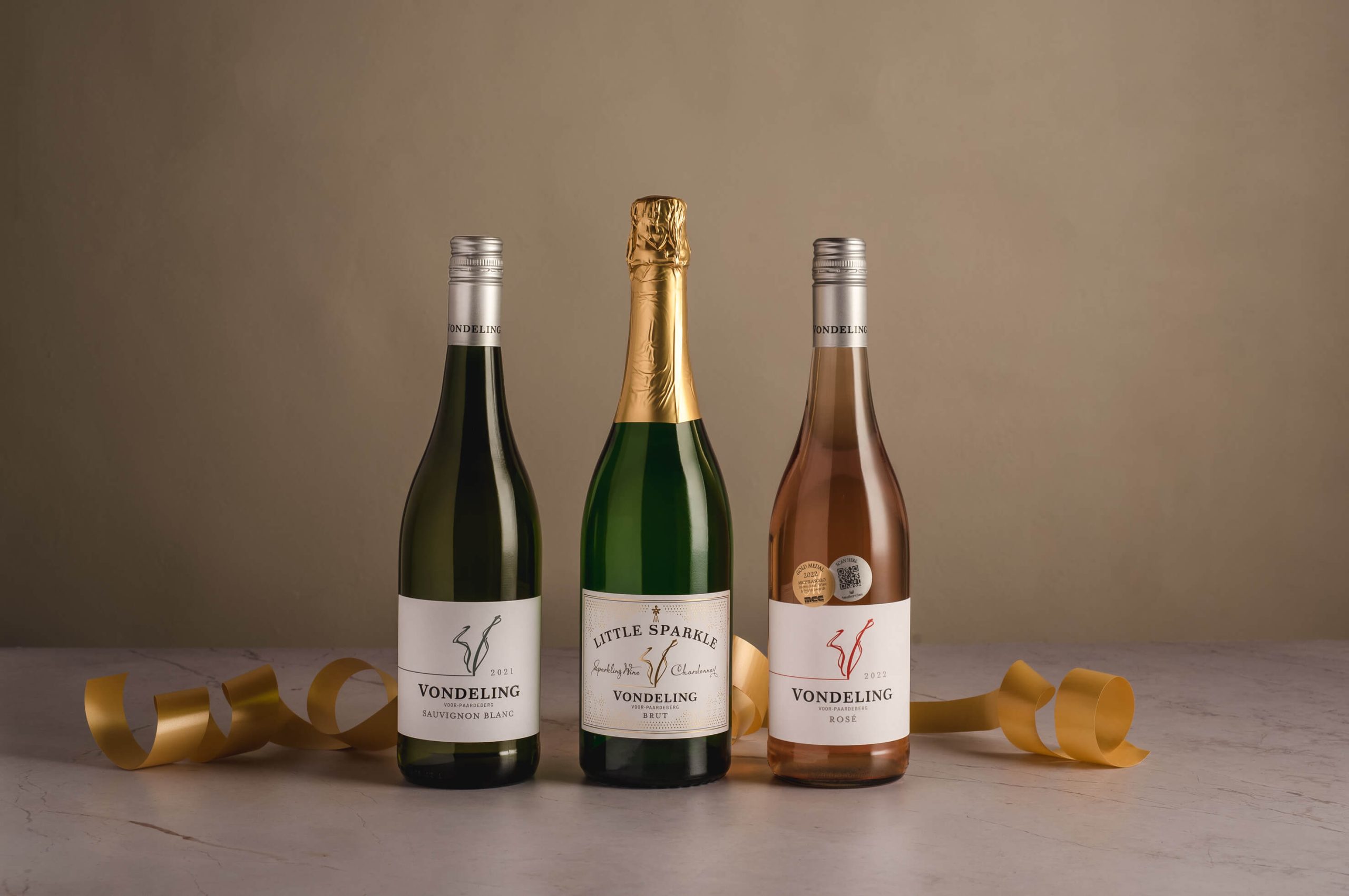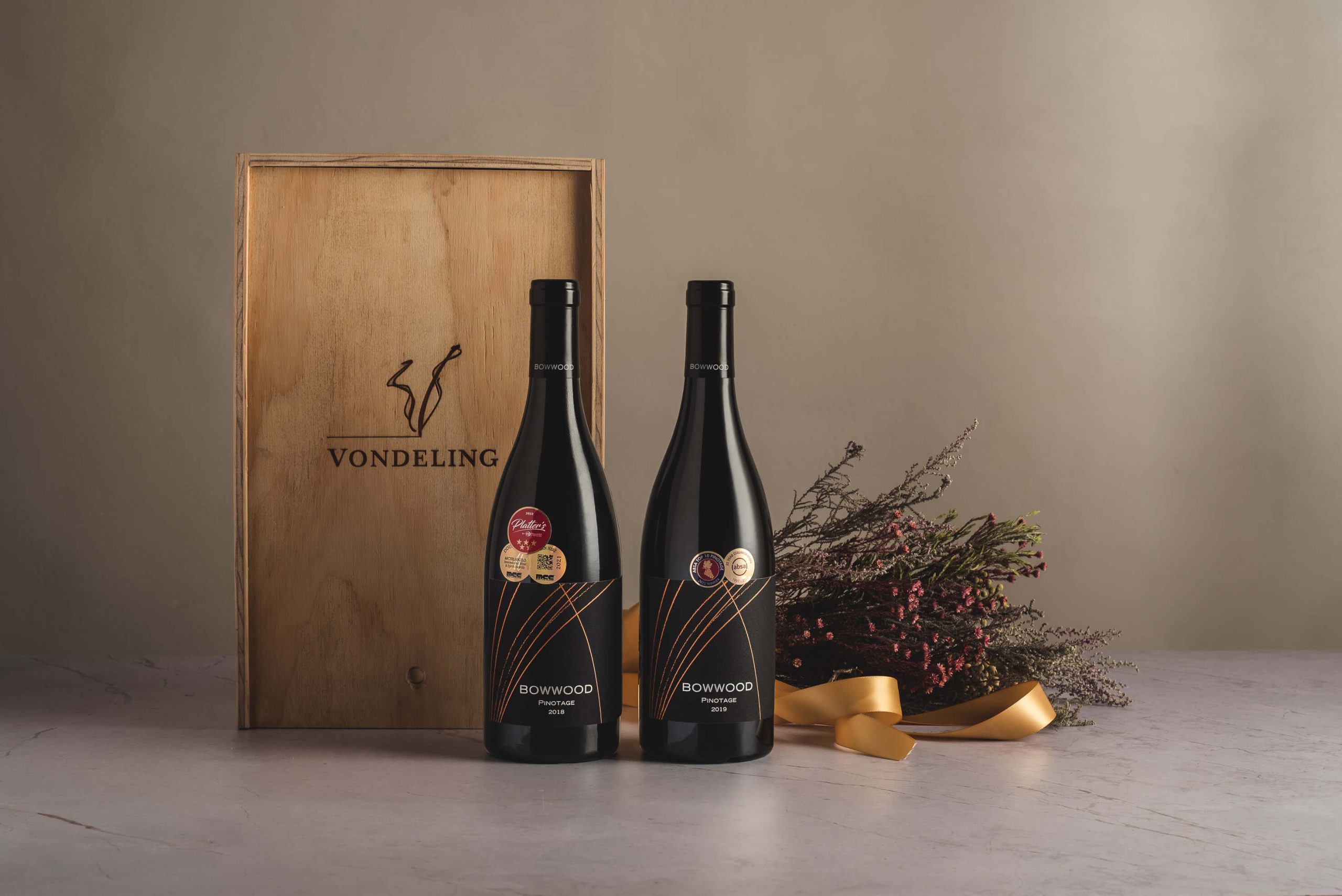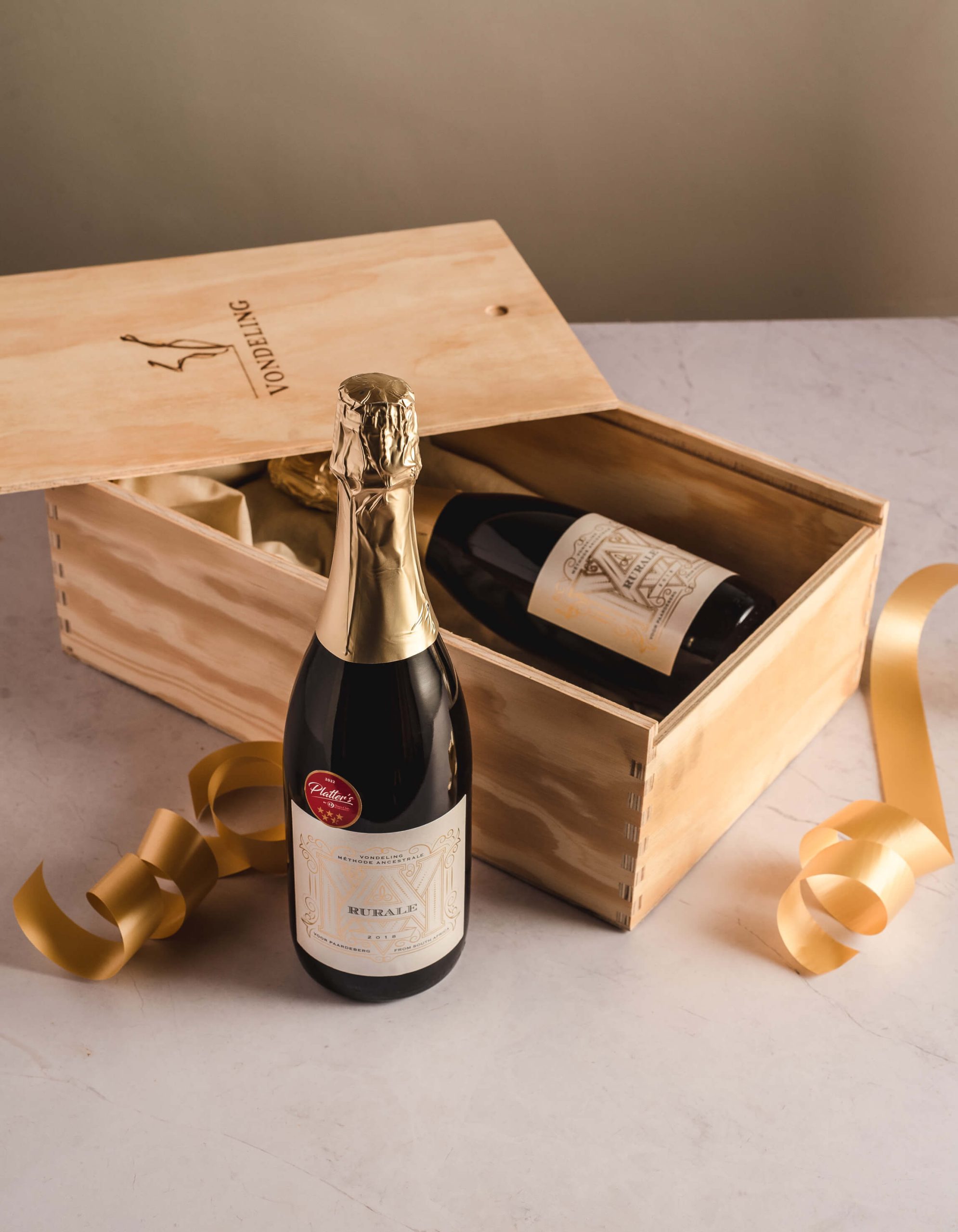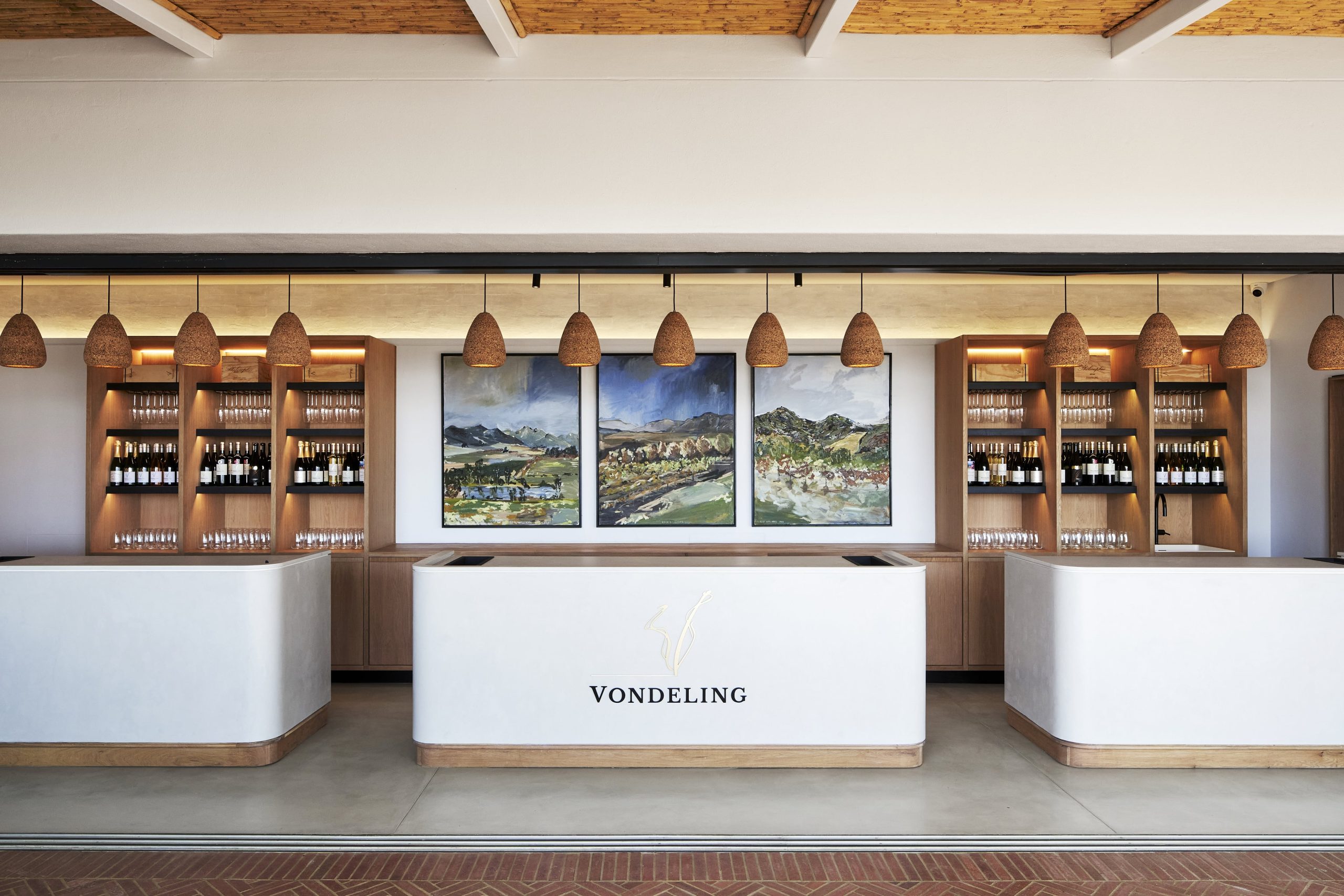-
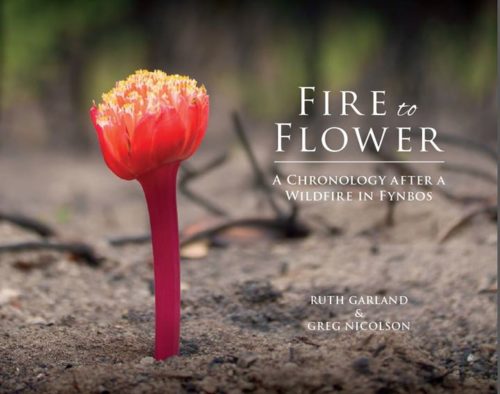 This publication materialised following a fire on the Paardeberg, which burnt 75% of the mountain above the farmlands. Being the first fire in 25 years, it offered an unmatched opportunity to document and observe the emergent plant species as they germinated and flowered. Sponsored by Anthony Ward, of Vondeling Wine Estate, botanist and photographer Greg Nicolson recorded and archived images and specimens over 18 months, in consultation with the Compton Herbarium. He collected over 1000 species, including one species new to science, and a number of new distribution records. Walking the mountain for over 18 months, gave Greg a broad view of animal, bird and insect inhabitants of the Paardeberg that have been included among the flowers. Ruth Garland was invited to write text to the publication, which is designed to highlight an appreciation of the diversity and beauty of this part of the matchless Cape Floral Kingdom. This book is primarily to give pleasure to those who love the natural world while also providing an opportunity to learn more about a spectacular part of it, so that it is treasured and adequately protected for generations to come.
This publication materialised following a fire on the Paardeberg, which burnt 75% of the mountain above the farmlands. Being the first fire in 25 years, it offered an unmatched opportunity to document and observe the emergent plant species as they germinated and flowered. Sponsored by Anthony Ward, of Vondeling Wine Estate, botanist and photographer Greg Nicolson recorded and archived images and specimens over 18 months, in consultation with the Compton Herbarium. He collected over 1000 species, including one species new to science, and a number of new distribution records. Walking the mountain for over 18 months, gave Greg a broad view of animal, bird and insect inhabitants of the Paardeberg that have been included among the flowers. Ruth Garland was invited to write text to the publication, which is designed to highlight an appreciation of the diversity and beauty of this part of the matchless Cape Floral Kingdom. This book is primarily to give pleasure to those who love the natural world while also providing an opportunity to learn more about a spectacular part of it, so that it is treasured and adequately protected for generations to come. -
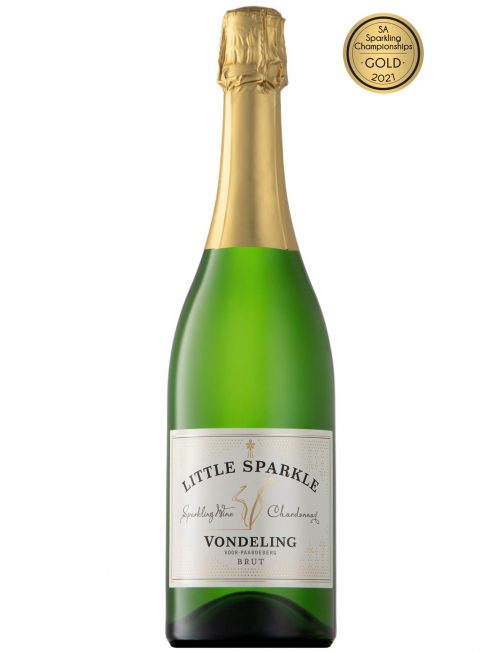
Little Sparkle
Inspired by our pioneering, limited release Methode Ancestral, our Little Sparkle is a fresh and vibrant offering for every occasion. This endearing wine will wash away the mundane and bring out the fabulous in you. Work on this project began several years ago and was born from the desire to make a premium Sparkling Wine affordable to ALL our loyal customers and wedding guests. We knew we had excellent Chardonnay, well suited to the production of premium sparkling wine but felt that the Rurale, our Methode Ancestral, was perhaps out of reach for some. We began by experimenting with different fermentation techniques that would offer you complexity without bottle fermentation and ageing. To put it simply we had to achieve this in the tank and then by using cutting edge new technology and equipment we were able to bottle the wine under high pressure and add that effervescent sparkle we love so much. VINIFICATION There is no doubt that great wine is made in the vineyard. At Vondeling we are blessed with a healthy assortment of soils, slopes and the climatic conditions that allow our grapes to ripen perfectly. We only work with grapes we farm ourselves and are therefore certain of their virility. The grapes for this wine originate from our steeper, South-facing slopes, which are naturally cooler. This helps to preserve the grape’s natural acidity, ensuring freshness and vibrancy. The grapes are picked during the early hours of the morning and crushed as whole bunches to limit oxidation and phenolic extraction. Keeping the colour bright and the aromas intact. Once pressed, the juice is allowed to settle in stainless steel tanks for 48hrs before the clear juice is racked and inoculated with a specifically neutral yeast, which will not create any overly tropical aromas. This is essential in creating a base wine suitable for sparkling wine production. Should there be too many overtly fruity aromas, the wine will be less refreshing and the effect of the bubbles less discreet. Fermentation encouraged to take place vigorously and at a warm temperature to promote mouthfeel and to dimmish fruity aromas. Fermentation takes approximately two weeks, after which the wine remains on the yeast lees for a minimum of 7months. During this time, through a process known as autolysis, the yeast cell walls disintegrate and impart a creaminess to the wine. Storage conditions are kept cool to encourage precipitation of some of the natural acidity and to block any secondary malo-lactic fermentation. The wine is now ready for a final filtration to clarify the wine and ensure its sterility before being bottled with an in-bottle pressure 5,4 bars. TASTING NOTES & CELLARING & FOOD PAIRING The wine is clear and vibrant with a hint of pale yellow on the fringe. Tiny chains of sparkling bubbles rise to the surface like miniature strings of pearls. On the nose, you’ll experience a mild citrus and brioche bouquet which is typical of premium sparkling Chardonnay. The Little Sparkle has a full palate with abundant bubbles and a smooth, soft, creamy finish Elegant and well-rounded, enjoy this wine wherever there is good company and great food. We recommend this wine with smoked salmon and cucumber sandwiches or delicious West Coast oysters. Accolades 2022 Gold Wine Awards - Gold 2021 SA Sparkling Wine Championship - Gold Analysis pH 3.3 Total Acidity 7.3 g/l Residual Sugar 11.7 g/l Alcohol 12.9 % Download Tasting Sheet -
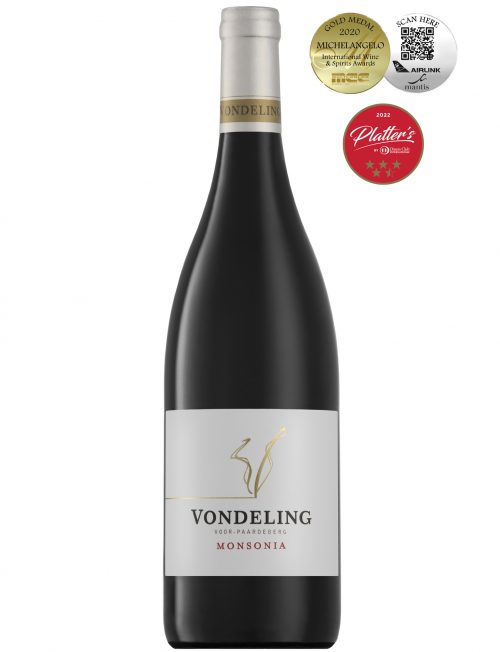 (Shiraz 60%, Mourvédre 23%, Carignan 10% & Grenache Noir 7%) Vondeling Monsonia is named after Monsonia Speciosa, a very rare species of fynbos (vegetation type occurring in the Western Cape region of South Africa) found in the Paardeberg mountain, the home of Vondeling wines. THE NAME MONSONIA The flower was named after Lady Anne Monson, the great-grandchild of King Charles II. Controversially, her first marriage was dissolved, due to the birth of an illegitimate child but she soon remarried Colonel George Monson of the Indian Military. She was known as a “remarkable lady botanist” and was instrumental in translating Linnaeus’s famous “Philosophia Botanica”. On her way to Calcutta, she visited the Cape of Good Hope and accompanied seasoned collector of South African plants, Carl Peter Thunberg, on several expeditions around the Cape. In 1774, he named the Monsonia species of plants after her. VINEYARDS The Shiraz vines grow in ancient, well-weathered granite soils on southeast-facing slopes – ideal for our warm South African climate. In total, six clones of Shiraz can be found on the farm and only the best performing clones go into the final blend. Typically, each clone contributes different characteristics to the wine and the different blocks are picked at varying degrees of ripeness, best suited to their character. The Mourvedre, Carignan, and Grenache are best adapted to hot sun and are grown as bush vines on North East-facing slopes. Highly selective hand-picking guarantees that only the best fruit arrives at the winery. VINIFICATION After being chilled overnight, bunches are partially destemmed, but not crushed, and whole berry fermentation takes place in open-top fermentation tanks. An initial two-day period of cold soaking is applied before wild yeast fermentation is allowed to commence. During fermentation, hand plunging, commonly known as "punch downs" is the method of mixing and extraction. After fermentation, the wine is pressed in a traditional boutique-size basket press. All wine is then transferred directly to barrel where malolactic fermentation takes place. Only large format French oak barrels are used, with about one-third new and the rest 2nd and 3rd fill. The wine is allowed to mature for 16 months before a final barrel selection, blending and bottling takes place TASTING NOTES & CELLARING & FOOD PAIRING Vibrant and clear charcoal red with beautifully viscous legs clinging to the glass. Each grape component vies for attention in this kaleidoscopic bouquet. Sweet Lillies and rose-petal Turkish delight from the Grenache. Plush black currant and blueberries from the Carignan. All wrapped in a velvety blanket of red berries and soft spice from the Shiraz. A smooth, velvety palate devoid of harsh or grippy tannin. Red cherry candy and sweet plumb at the fore with a soft plush center and subtle spice with roasted coconut at the end. Well paired with a mature steak, barbequed over a hotbed of coals and served with sauteed baby mushrooms, or try a hearty, slow-cooked pork belly with root vegetables and tomatoes. Accolades 2016 Vinatge:
(Shiraz 60%, Mourvédre 23%, Carignan 10% & Grenache Noir 7%) Vondeling Monsonia is named after Monsonia Speciosa, a very rare species of fynbos (vegetation type occurring in the Western Cape region of South Africa) found in the Paardeberg mountain, the home of Vondeling wines. THE NAME MONSONIA The flower was named after Lady Anne Monson, the great-grandchild of King Charles II. Controversially, her first marriage was dissolved, due to the birth of an illegitimate child but she soon remarried Colonel George Monson of the Indian Military. She was known as a “remarkable lady botanist” and was instrumental in translating Linnaeus’s famous “Philosophia Botanica”. On her way to Calcutta, she visited the Cape of Good Hope and accompanied seasoned collector of South African plants, Carl Peter Thunberg, on several expeditions around the Cape. In 1774, he named the Monsonia species of plants after her. VINEYARDS The Shiraz vines grow in ancient, well-weathered granite soils on southeast-facing slopes – ideal for our warm South African climate. In total, six clones of Shiraz can be found on the farm and only the best performing clones go into the final blend. Typically, each clone contributes different characteristics to the wine and the different blocks are picked at varying degrees of ripeness, best suited to their character. The Mourvedre, Carignan, and Grenache are best adapted to hot sun and are grown as bush vines on North East-facing slopes. Highly selective hand-picking guarantees that only the best fruit arrives at the winery. VINIFICATION After being chilled overnight, bunches are partially destemmed, but not crushed, and whole berry fermentation takes place in open-top fermentation tanks. An initial two-day period of cold soaking is applied before wild yeast fermentation is allowed to commence. During fermentation, hand plunging, commonly known as "punch downs" is the method of mixing and extraction. After fermentation, the wine is pressed in a traditional boutique-size basket press. All wine is then transferred directly to barrel where malolactic fermentation takes place. Only large format French oak barrels are used, with about one-third new and the rest 2nd and 3rd fill. The wine is allowed to mature for 16 months before a final barrel selection, blending and bottling takes place TASTING NOTES & CELLARING & FOOD PAIRING Vibrant and clear charcoal red with beautifully viscous legs clinging to the glass. Each grape component vies for attention in this kaleidoscopic bouquet. Sweet Lillies and rose-petal Turkish delight from the Grenache. Plush black currant and blueberries from the Carignan. All wrapped in a velvety blanket of red berries and soft spice from the Shiraz. A smooth, velvety palate devoid of harsh or grippy tannin. Red cherry candy and sweet plumb at the fore with a soft plush center and subtle spice with roasted coconut at the end. Well paired with a mature steak, barbequed over a hotbed of coals and served with sauteed baby mushrooms, or try a hearty, slow-cooked pork belly with root vegetables and tomatoes. Accolades 2016 Vinatge:2020 Platter’s Guide – 4.5 Stars 2019 Michelangelo – Gold 2019 Winemag - 93pts
2018 Vintage:2021 Platter’s Guide – 4.5 Stars / 94 Points 2020 Michelangelo - Gold 2022 Tim Atkin 90 Pts 2022 Michelangelo Awards - Gold 2023 Platter’s Guide 4,5 Stars (92 Pts)
2019 Vintage: 2024 Platter’s Guide 4.5 Stars (92 Pts) Analysis pH 3.50 Total Acidity 5.3 g/l Residual Sugar 3.3 g/l Alcohol 13.72 % Download Tasting Sheet -
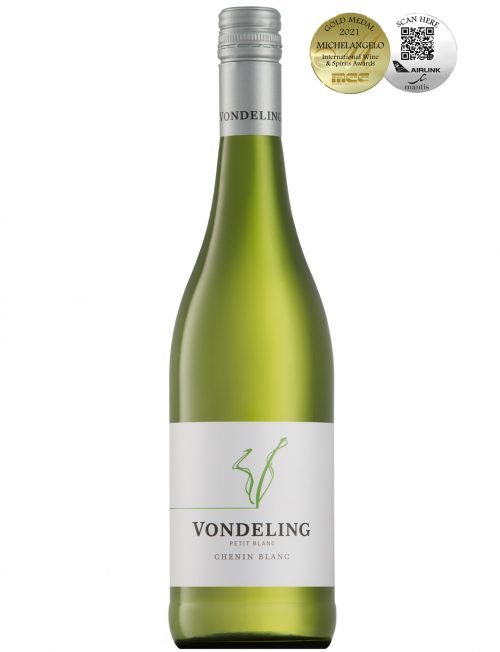 VINEYARDS Beautiful mature Chenin Blanc planted on south-facing slopes and composed exclusively of shy bearing, well-weathered granite soils. These vineyards produce a low average crop of only 9 tons per hectare, which ensures a tremendous concentration of fruit flavours on the palate. All the fruit is hand-picked on taste at optimum ripeness, ranging from 21-23ºB. VINIFICATION Our grapes are picked in the cool, early hours of the morning and processed immediately. The grapes are destemmed and chilled further before they are pressed. This short supply from vine to press ensures minimal degradation of the fruit aromas. The free-run juice and press juices are kept separate from each other and treated according to their individual character. The wines are cold fermented in small stainless-steel tanks and are 100% unwooded. This method locks in freshness and vigor, which elevates the natural aromatics. After fermentation, the wines are matured on the yeast lees to promote mouth feel and creaminess, before they are blended, stabilized, and bottled. TASTING NOTES & CELLARING & FOOD PAIRING he wine has a striking, pale lime colour. The nose has pronounced tropical aromas of guava, passion fruit, and melon with an interesting floral, potpourri twist. On the palate, you can enjoy white peach, kiwi fruit, and pink lady apple, underpinned by a delightful flinty freshness and delicate citrus finish. Full and fresh, this wine will pair well with prawn risotto, lobster, soft cheeses, and sunshine. Accolades 2022 Vintage: 2022 Michelangelo - Double Gold 2022 Gilbert Gaillard - Gold (87 pts) 2021 Vintage: 2021 Michelangelo - Gold 2020 Vintage: 2020 Gold Wines Awards - Gold Analysis pH 3,42 Total Acidity 5.9 g/l Residual Sugar 3.3 g/l Alcohol 12.7 % Download Tasting Sheet
VINEYARDS Beautiful mature Chenin Blanc planted on south-facing slopes and composed exclusively of shy bearing, well-weathered granite soils. These vineyards produce a low average crop of only 9 tons per hectare, which ensures a tremendous concentration of fruit flavours on the palate. All the fruit is hand-picked on taste at optimum ripeness, ranging from 21-23ºB. VINIFICATION Our grapes are picked in the cool, early hours of the morning and processed immediately. The grapes are destemmed and chilled further before they are pressed. This short supply from vine to press ensures minimal degradation of the fruit aromas. The free-run juice and press juices are kept separate from each other and treated according to their individual character. The wines are cold fermented in small stainless-steel tanks and are 100% unwooded. This method locks in freshness and vigor, which elevates the natural aromatics. After fermentation, the wines are matured on the yeast lees to promote mouth feel and creaminess, before they are blended, stabilized, and bottled. TASTING NOTES & CELLARING & FOOD PAIRING he wine has a striking, pale lime colour. The nose has pronounced tropical aromas of guava, passion fruit, and melon with an interesting floral, potpourri twist. On the palate, you can enjoy white peach, kiwi fruit, and pink lady apple, underpinned by a delightful flinty freshness and delicate citrus finish. Full and fresh, this wine will pair well with prawn risotto, lobster, soft cheeses, and sunshine. Accolades 2022 Vintage: 2022 Michelangelo - Double Gold 2022 Gilbert Gaillard - Gold (87 pts) 2021 Vintage: 2021 Michelangelo - Gold 2020 Vintage: 2020 Gold Wines Awards - Gold Analysis pH 3,42 Total Acidity 5.9 g/l Residual Sugar 3.3 g/l Alcohol 12.7 % Download Tasting Sheet -
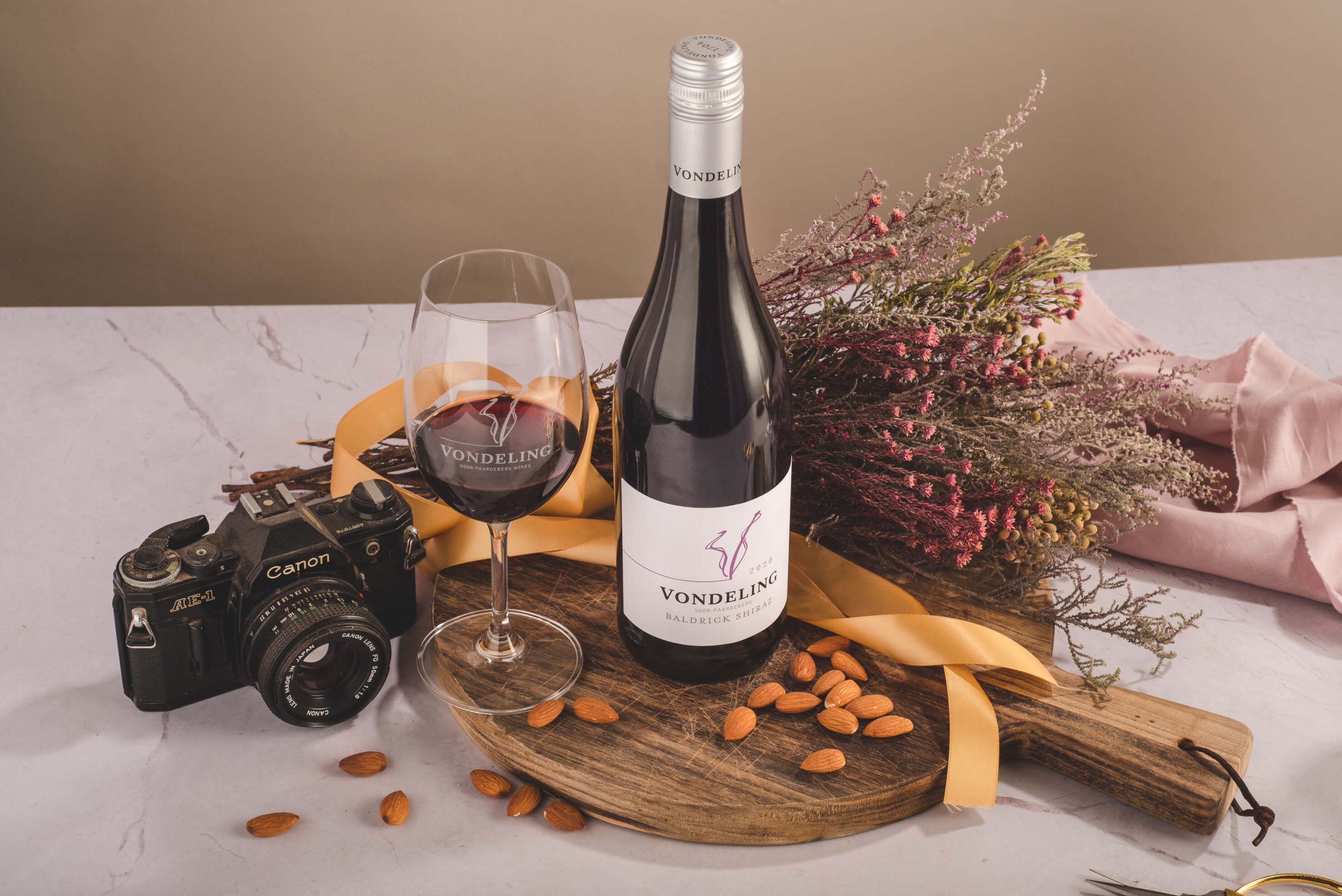
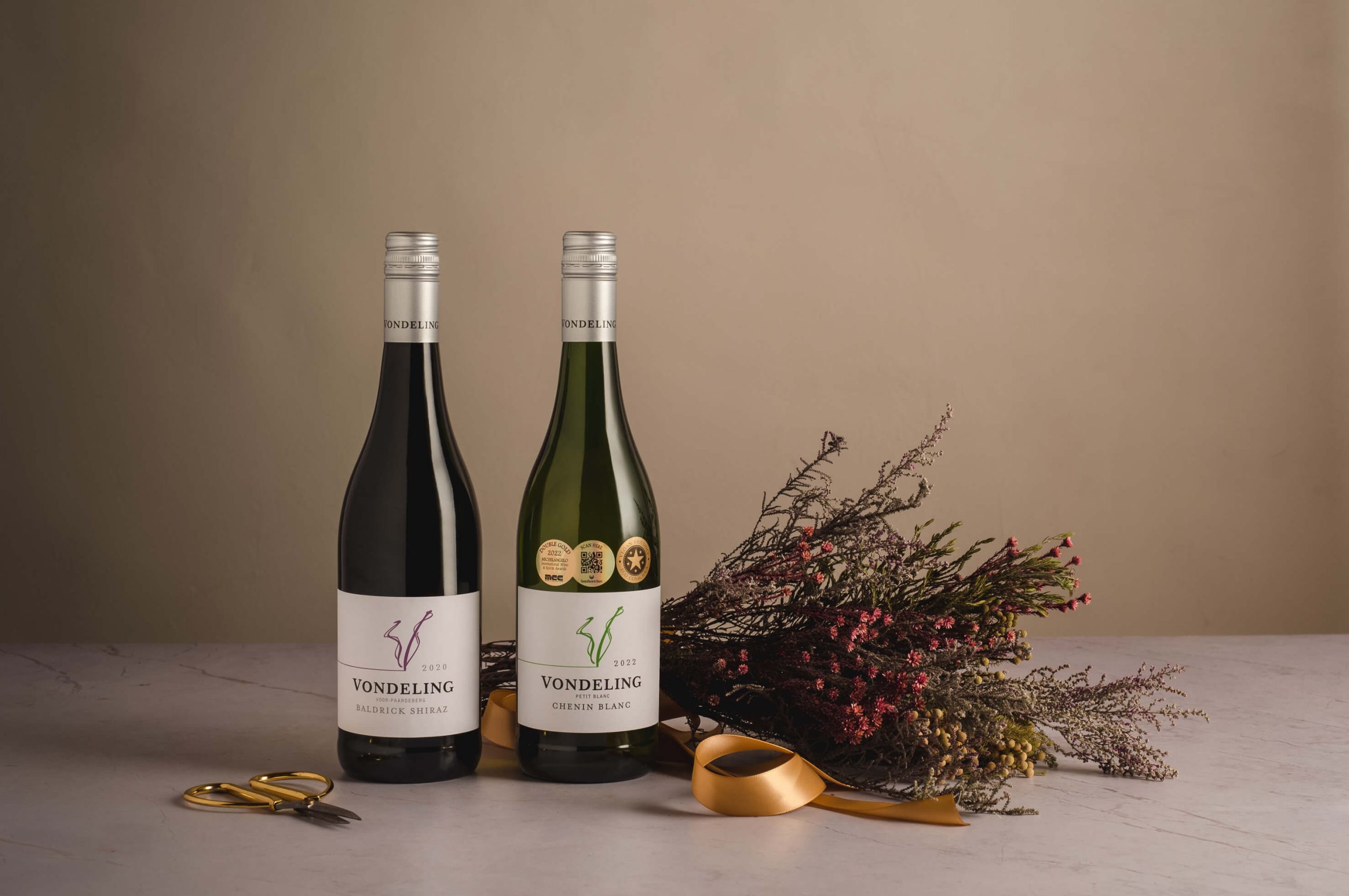
Petit Gift Pack (2 pack option)
R210.00 (incl. VAT)
Option 1: Petit Chenin Blanc 2023 & Baldrick Shiraz 2021 OR Option 2: Petit Rouge Merlot 2021 & Sauvignon Blanc 2023 OR Option 3: Petit Chenin Blanc 2023 & Rose 2022 OR Option 4: Petit Rouge Merlot 2021 & Rose 2022 Packaged in a sophisticated, branded 2-pack cardboard wine carrier, finished with ribbon & fynbos from the farm. -
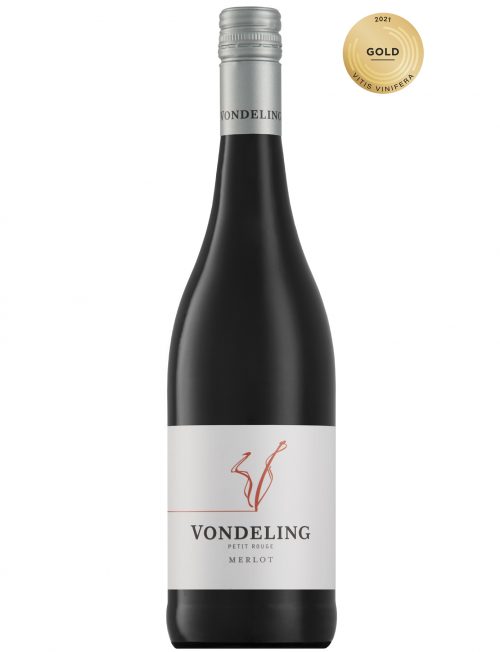 (100% Merlot) VINEYARDS The Merlot vineyard used in this wine are planted in a combination of well-weathered granite soils and beautiful “koffie klip” (shale) slopes. They are South-West facing slopes, which helps keep temperatures moderate. Optimum ripeness was at 24°B, with vibrant flavours of ripe, red fruits. Hand picking, under the watchful eye of the winemaker, ensures that only the finest fruit is delivered to the cellar. VINIFICATION The grapes are destemmed, but not crushed and whole berry fermentation at cool temperatures is practiced, to ensure a broad spectrum of bright fruit and spiciness without heavy tannin extraction. After fermentation, the wine is transferred to old 300Lt French oak barrels and the skins are pressed. Malo-lactic fermentation takes place in barrel after which the wines are racked, the batches are blended, and the wine prepared to be bottled. TASTING NOTES & CELLARING & FOOD PAIRING The wine displays a bright ruby red colour. It shows a vibrant, fruit filled aroma of sleek cherries, subtle raspberry and soft, black pepper. The nose carries through beautifully to the palate and is nicely supported by refined tannins with a smooth finish. A dynamic wine, which can be enjoyed at many levels, but is exceptionally well pared with a traditional South African braai. Alternatively, Sunday roast is a must. We hope you enjoy it. Accolades 2020 Vintage: 2021 Vitis Vinifera (Gold) 2019 Vinatge: 2020 Gold Wine Awards - Gold 2020 Vitis Vinifera Awards - Gold “Worth twice the price” - Michael Fridjhon Analysis pH 3.61 Total Acidity 5.1 g/l Residual Sugar 2.9 g/l Alcohol 13.28 % Download Tasting Sheet
(100% Merlot) VINEYARDS The Merlot vineyard used in this wine are planted in a combination of well-weathered granite soils and beautiful “koffie klip” (shale) slopes. They are South-West facing slopes, which helps keep temperatures moderate. Optimum ripeness was at 24°B, with vibrant flavours of ripe, red fruits. Hand picking, under the watchful eye of the winemaker, ensures that only the finest fruit is delivered to the cellar. VINIFICATION The grapes are destemmed, but not crushed and whole berry fermentation at cool temperatures is practiced, to ensure a broad spectrum of bright fruit and spiciness without heavy tannin extraction. After fermentation, the wine is transferred to old 300Lt French oak barrels and the skins are pressed. Malo-lactic fermentation takes place in barrel after which the wines are racked, the batches are blended, and the wine prepared to be bottled. TASTING NOTES & CELLARING & FOOD PAIRING The wine displays a bright ruby red colour. It shows a vibrant, fruit filled aroma of sleek cherries, subtle raspberry and soft, black pepper. The nose carries through beautifully to the palate and is nicely supported by refined tannins with a smooth finish. A dynamic wine, which can be enjoyed at many levels, but is exceptionally well pared with a traditional South African braai. Alternatively, Sunday roast is a must. We hope you enjoy it. Accolades 2020 Vintage: 2021 Vitis Vinifera (Gold) 2019 Vinatge: 2020 Gold Wine Awards - Gold 2020 Vitis Vinifera Awards - Gold “Worth twice the price” - Michael Fridjhon Analysis pH 3.61 Total Acidity 5.1 g/l Residual Sugar 2.9 g/l Alcohol 13.28 % Download Tasting Sheet -
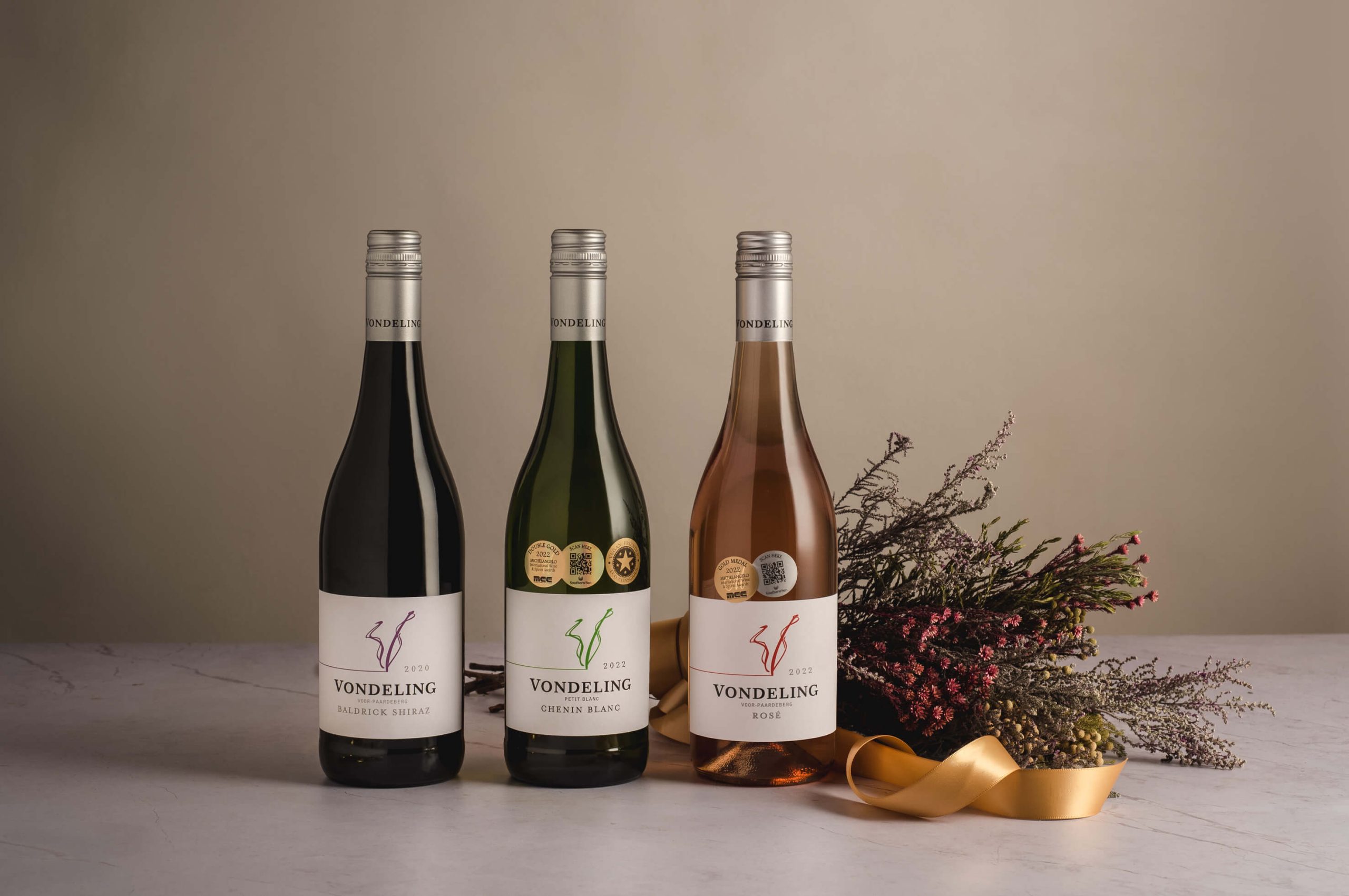
Petit Gift Pack (3 pack option)
R315.00 (incl. VAT)
Option 1: Petit Chenin Blanc 2023 & Rose 2023 & Petit Rouge Merlot 2021 OR Option 2: Petit Chenin Blanc 2023 & Rose 2023 & Baldrick Shiraz 2021 OR Option 3: Sauvignon Blanc 2023 & Rose 2023 & Petit Rouge Merlot 2021 OR Option 4: Sauvignon Blanc 2023 & Rose 2023 & Baldrick Shiraz 2021 Packaged in a sophisticated, branded 3-pack cardboard wine carrier, finished with ribbon & fynbos from the farm. -
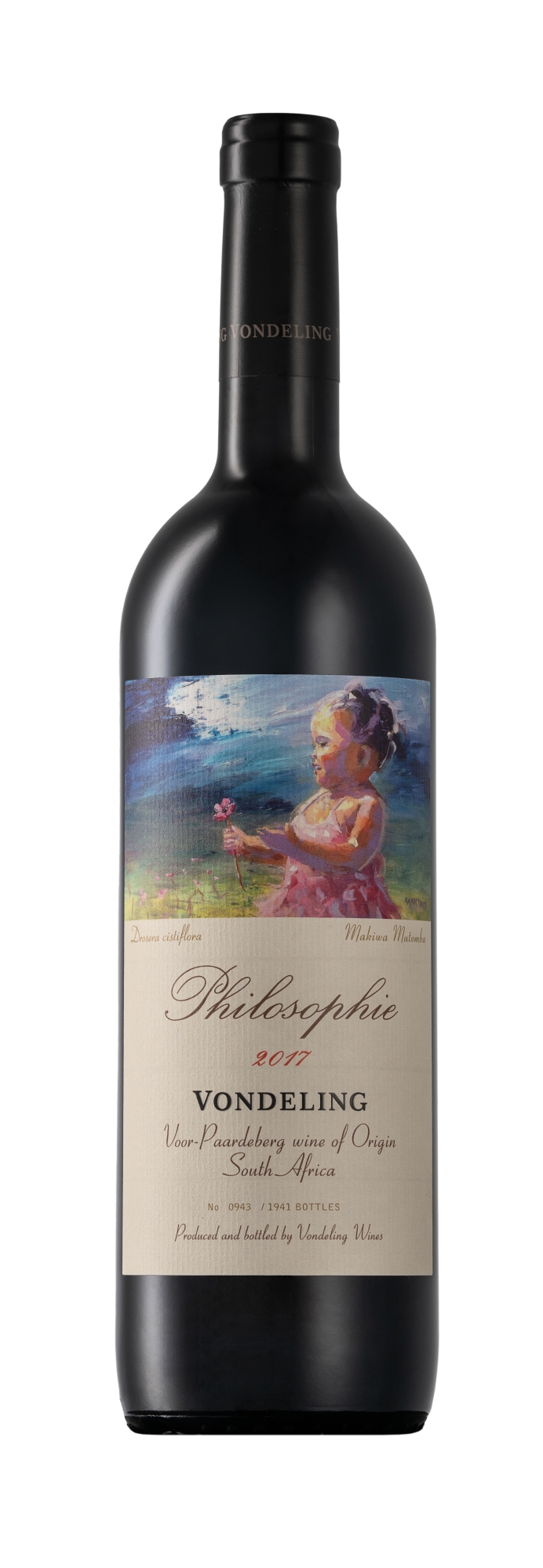 LIMITED RELEASE Philosophie is a brave endeavour in which we attempt to marry the mind, the heart and the soil as we celebrate the diversity of Vondeling. THE STORY BEHIND THE LABEL Each year a celebrated artist is recruited to illustrate a rare Paardeberg flower in the medium of their choice. This unique rendition is placed on a numbered selection of Vondeling’s finest bottles to create a series of collectable and rare wines. Drosera cistiflora is a perennial, carnivorous flower uniquely occurring in its red form in our region. Beautifully rendered in oil on canvas by the inspirational talent of Makiwa Mutomba, adding a sense of place and delight to this endearing wine. VINEYARDS In a handful of specific vineyards, we explore the absolute limits of quality with no consideration to cost. 2017 is a unique vintage with Cabernet Sauvignon as the dominant grape. Each vineyard is carefully assessed at the end of the growing season and attentively pruned during the winter. At bud burst, any shoots which develop poorly are immediately removed. This ensures that the remaining shoots have plenty of energy to grow sturdy, fertile flowers and facilitate a uniform berry set. As the grapes develop only one bunch per cane is selected and the rest are dropped to the ground. This lowers the load on the vine, removing any plant stress and allowing perfect flavour and tannin development. It also diminishes any need for irrigation and helps preserve the grape’s natural acidity. VINIFICATION Once deemed to have reached optimal ripeness the grapes are hand-picked and refrigerated for 24hrs. The bunches are carefully destemmed, but not crushed and the berries are individually sorted to remove any green material. The berries are not pumped, but ferried, via conveyor to open-top fermenters. Cold soaking is done at 6 degrees Celsius for a period of 5 days. Cold soaking is a process that allows only partial degradation of the grape cell wall, to gently extract the fruit flavours and aromatics situated below the surface of the skin. Subtle tannin extraction protects these delicate flavours and promotes colour stability. As the berries slowly come to room temperature, ambient yeasts commence with spontaneous fermentation. This natural fermentation by multiple yeast strains, is preferable, as it will ensure that the wine has complexity and character. A cool fermentation temperature slows the rate of fermentation and affords the winemaker adequate time to assess and manipulate the character of the wine, thus unlocking its full potential. Full extraction is ensured by regular punch downs after three weeks of maceration the skins are gently pressed in a traditional basket press. From the press, the wine moves directly to 300L French Oak barrels for malolactic fermentation. This slow bacterial degradation of the wine’s harsher acidity has the welcome side effect of meshing the oak and natural fruit flavours into a seamless package. Two-thirds of the barrels are new. The wine remains on its yeast and malolactic lees for 14 months before the best 10 barrels are selected, blended and returned for an additional 8 months of maturation. Of these 10 barrels, only 5 are selected for the final blend. The wine is bottled after 3 months in tank and bottle matured for at least two years before release. TASTING NOTES & CELLARING & FOOD PAIRING A deep but vibrant, scarlet red colour. A wonderfully expressive and enthusiastic nose. Bursting with bright red cherry and high floral notes. Beautifully laced with sweet vanilla and subtle wood shavings. The palate is precise and bold with delightful tension. Ripe raspberry and cinnamon lead with underlying layers of trimmed cigar and fine tannin. Pairs well with steak, especially richer steak dishes such as tournedos Rossini, posh burgers and Roast duck. Accolades 2017 Vintage: 2021 Tim Atkin - 89 Points 2016 Vintage: 2022 Platter's Guide - 4.5 Stars (94pts) 2015 Vintage: 2018 Platter’s Guide – 4.5 Stars 2020 Platter’s Guide – 4.5 Stars 2020 Tim Atkin 93 Points 2020 Winemag – 92 points 2020 Veritas – Silver Outstanding 2021 Platter’s Guide – 4.5 stars (94 pts) Analysis pH 3.6 Total Acidity 6.4 g/l Residual Sugar 3.4 g/l Alcohol 14.3 % Download Tasting Sheet
LIMITED RELEASE Philosophie is a brave endeavour in which we attempt to marry the mind, the heart and the soil as we celebrate the diversity of Vondeling. THE STORY BEHIND THE LABEL Each year a celebrated artist is recruited to illustrate a rare Paardeberg flower in the medium of their choice. This unique rendition is placed on a numbered selection of Vondeling’s finest bottles to create a series of collectable and rare wines. Drosera cistiflora is a perennial, carnivorous flower uniquely occurring in its red form in our region. Beautifully rendered in oil on canvas by the inspirational talent of Makiwa Mutomba, adding a sense of place and delight to this endearing wine. VINEYARDS In a handful of specific vineyards, we explore the absolute limits of quality with no consideration to cost. 2017 is a unique vintage with Cabernet Sauvignon as the dominant grape. Each vineyard is carefully assessed at the end of the growing season and attentively pruned during the winter. At bud burst, any shoots which develop poorly are immediately removed. This ensures that the remaining shoots have plenty of energy to grow sturdy, fertile flowers and facilitate a uniform berry set. As the grapes develop only one bunch per cane is selected and the rest are dropped to the ground. This lowers the load on the vine, removing any plant stress and allowing perfect flavour and tannin development. It also diminishes any need for irrigation and helps preserve the grape’s natural acidity. VINIFICATION Once deemed to have reached optimal ripeness the grapes are hand-picked and refrigerated for 24hrs. The bunches are carefully destemmed, but not crushed and the berries are individually sorted to remove any green material. The berries are not pumped, but ferried, via conveyor to open-top fermenters. Cold soaking is done at 6 degrees Celsius for a period of 5 days. Cold soaking is a process that allows only partial degradation of the grape cell wall, to gently extract the fruit flavours and aromatics situated below the surface of the skin. Subtle tannin extraction protects these delicate flavours and promotes colour stability. As the berries slowly come to room temperature, ambient yeasts commence with spontaneous fermentation. This natural fermentation by multiple yeast strains, is preferable, as it will ensure that the wine has complexity and character. A cool fermentation temperature slows the rate of fermentation and affords the winemaker adequate time to assess and manipulate the character of the wine, thus unlocking its full potential. Full extraction is ensured by regular punch downs after three weeks of maceration the skins are gently pressed in a traditional basket press. From the press, the wine moves directly to 300L French Oak barrels for malolactic fermentation. This slow bacterial degradation of the wine’s harsher acidity has the welcome side effect of meshing the oak and natural fruit flavours into a seamless package. Two-thirds of the barrels are new. The wine remains on its yeast and malolactic lees for 14 months before the best 10 barrels are selected, blended and returned for an additional 8 months of maturation. Of these 10 barrels, only 5 are selected for the final blend. The wine is bottled after 3 months in tank and bottle matured for at least two years before release. TASTING NOTES & CELLARING & FOOD PAIRING A deep but vibrant, scarlet red colour. A wonderfully expressive and enthusiastic nose. Bursting with bright red cherry and high floral notes. Beautifully laced with sweet vanilla and subtle wood shavings. The palate is precise and bold with delightful tension. Ripe raspberry and cinnamon lead with underlying layers of trimmed cigar and fine tannin. Pairs well with steak, especially richer steak dishes such as tournedos Rossini, posh burgers and Roast duck. Accolades 2017 Vintage: 2021 Tim Atkin - 89 Points 2016 Vintage: 2022 Platter's Guide - 4.5 Stars (94pts) 2015 Vintage: 2018 Platter’s Guide – 4.5 Stars 2020 Platter’s Guide – 4.5 Stars 2020 Tim Atkin 93 Points 2020 Winemag – 92 points 2020 Veritas – Silver Outstanding 2021 Platter’s Guide – 4.5 stars (94 pts) Analysis pH 3.6 Total Acidity 6.4 g/l Residual Sugar 3.4 g/l Alcohol 14.3 % Download Tasting Sheet

